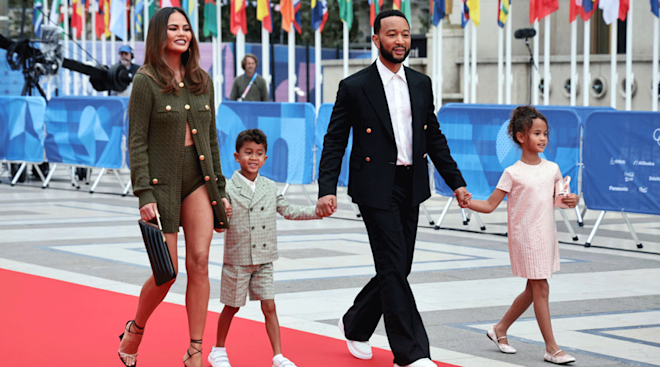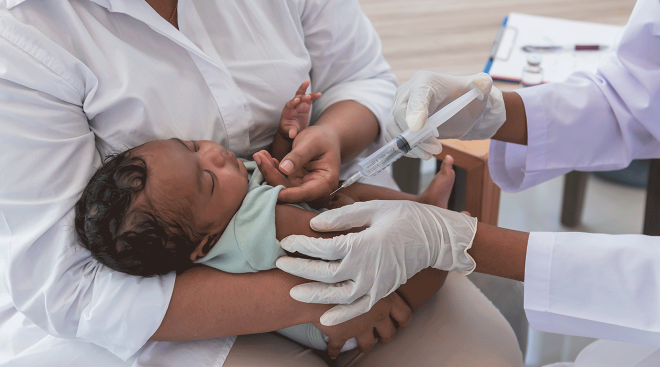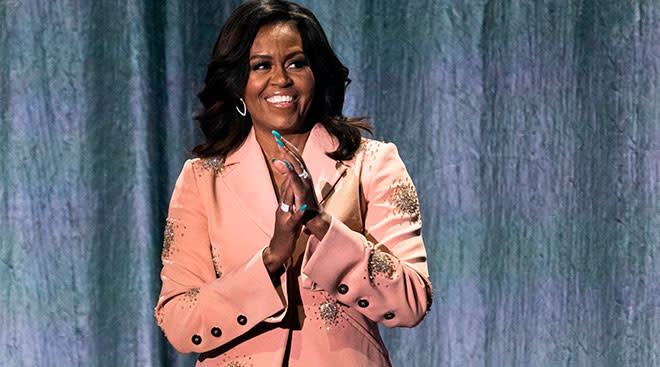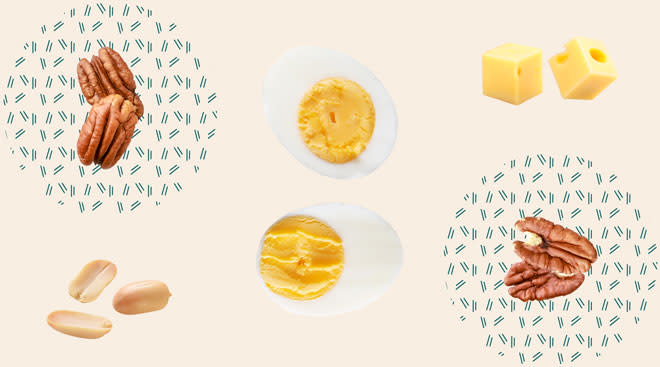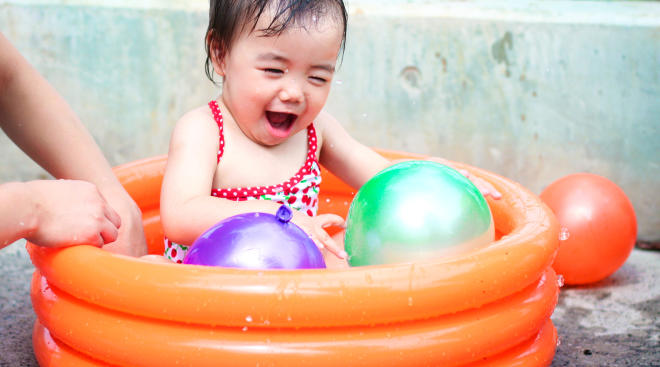The Truth About Children’s Vitamins: What You Need to Know
Feeding your child is a primal impulse, so it’s only natural to want to make sure your kid is getting all the vitamins and nutrients they need to stay healthy. But when mealtime feels like a battlefield, it’s tempting to give in and call a bowlful of Cheerios dinner. Whether you have a super-picky eater who seems to subsist entirely on pretzel sticks or a messy eater who throws more food on the floor than into their mouth, supplementing with kids’ vitamins can seem like a beacon of hope for some semblance of nutrition. But are vitamins for kids really necessary? Here’s the 411 on children’s vitamins, including the pros and cons and whether your child should actually take them.
Experts agree that a healthy child who is eating well-balanced meals doesn’t need to take kids’ vitamins as a supplement. “The best nutrition should come from food,” says Alexis Phillips-Walker, DO, a pediatrician in the Houston, Texas, area. “A vitamin isn’t going to replace what they should be getting with a good diet.” Breast milk, formula and basic toddler and preschooler staples contain most of the necessary vitamins and minerals for healthy growth and development. Even a bowl of Fruit Loops contains important nutrients!
On the other hand, kids’ vitamins are more than just glorified gummy candies. When children are on limited diets due to lifestyle (vegan, gluten-free, dairy-free) or a medical condition (diabetes, allergies), adding a daily children’s multivitamin or supplements can be very beneficial. As Phillips-Walker says, “With a multivitamin, a child is getting something versus nothing.”
To make sure your kids are getting all the important vitamins and minerals they need, it can be tempting to offer children’s vitamins just as a precaution. But while kids’ vitamins can offer great benefits for some children, they can also pose certain risks. Here are the top concerns when it comes to supplemental vitamins for kids—and how you can sidestep problems.
Vitamin overdose
With so many (delicious) vitamin options around, it could be easy to get carried away with stocking up on kids’ vitamins that promise to do it all—help with growth, build immunity, boost brain power and transform baby’s gut health. But fully understanding the food labels, and figuring out what your child really needs, can prove tricky. “The amount of vitamins and minerals your child needs depends on their age,” says Janet Crane, MD, an assistant professor of pediatrics at Johns Hopkins University in Baltimore, Maryland. If you decide to supplement your child’s diet with various kids’ vitamins, make sure the total daily value percentage doesn’t exceed 100 percent, especially for fat-soluble vitamins (vitamin A,D, E and K), which are stored in the body, as opposed to water-soluble vitamins (vitamin C, B vitamins), which are easily absorbed by the body and flushed out with fluids. Your best bet is to choose an all-in-one vitamin instead of juggling several supplement bottles. Smarty Pants Organics Toddler Complete and Organics Kids Complete gummies are great because you can pick the dosage based on your child’s age (the kids’ version is geared for those older than 3).
Contamination
The US Food and Drug Administration (FDA) doesn’t monitor the safety and quality of kids’ vitamins and supplements—meaning it’s up to the manufacturers to ensure their products are safe and free of contaminants. And sometimes mistakes happen. Most recently, a mom reported finding metal shavings in her toddler’s Zarbee’s Naturals multivitamin bottle. ConsumerLab.com, an independent watchdog for health and nutrition products, keeps track of vitamin recalls and warnings. You can also sign up for a monthly email that compiles all children’s product recalls via Safe Kids and check the FDA website for the latest contamination alerts.
Sugar levels
Most kids’ gummy vitamins look and taste like candy—making their sugar content a bit suspect. You should generally limit your kids’ sugar intake to 25 grams a day, so handing out a few gummy vitamins a day might seem like a treat. But that’s not necessarily a bad thing. “Pure vitamins are very unpalatable,” Crane says. “One to 2 grams of sugar per vitamin is a reasonable amount.” Most children’s vitamin manufacturers abide by this sugar-per-vitamin amount, but you can also swap for a sugar-free option, like Yummi Bears Sugar Free Complete Multi, which is sweetened with chicory root. In addition to high sugar levels, you should also look out for artificial flavors and colors, such as Red #40 and Yellow #5 and #6, Phillips-Walker says; they’ve been linked to negative side effects like hyperactivity.
Since the body can’t produce most vitamins (with some exceptions, like vitamin D, which is made when skin is exposed to sunlight), a children’s multivitamin, which is packed with essential vitamins, can provide a helpful boost for certain kids. But to the average parent, the supplement facts on the supplement bottle look more like an alphabet than a meaningful list of what’s in each pill. To decipher the labels for you, we’ve listed out the important vitamins and their benefits for kids, from vitamin A to zinc. Good news: You don’t need to rely on a children’s multivitamin to have your child reap these benefits—keep reading to learn which foods are naturally rich in key vitamins for kids.
Vitamin A
Vegetables like carrots and sweet potatoes are chock-full of vitamin A, which helps support your child’s immune system, vision, cell growth and formation of major organs like the heart and lungs. If you toddler won’t touch veggies, don’t sweat it—even ice cream has a respectable amount of vitamin A.
B vitamins
Animal proteins—fish, chicken, meat, eggs and dairy—are the best source of this energy-boosting vitamin. Studies also link vitamin B consumption to healthy brain development and cognitive function. Aside from in kids’ vitamins, you can find B vitamins naturally in beans, peas, leafy green veggies and fortified cereals. B vitamins can go by different names, including thiamine, riboflavin, niacin, B6, B12, folic acid and folate. Lack of B6 and B12 in your child’s diet can lead to anemia.
Vitamin C
This vitamin is known for its immune-supporting properties and might even reduce the duration of your kid’s cold. But you might not know that an orange a day might also keep the boo-boos at bay. Vitamin C—which is found in fruits like citrus and strawberries, as well as beans and cabbage-family vegetables—can help rebuild connective tissue. This vitamin also helps the body absorb iron, especially from plant-based sources. Tip: Sneak some broccoli into a black bean quesadilla and you’ve got a vitamin C-packed kid’s meal.
Calcium
You’ve seen enough Got Milk? ads to know dairy helps build healthy bones, especially in growing children. This mineral is best absorbed when paired with vitamin D. You can find this duo in fortified orange juice or in kids’ vitamins like The Honest Co. Gummy Calcium & Vitamin D3, which is dairy and gluten-free. Edamame, chickpeas and sesame seeds are also excellent sources of calcium. Hint: Even picky eaters won’t turn down tahini (sesame seed paste) cookies.
Vitamin D
While sunshine can help your child make vitamin D, you might want to enlist the help of supplemental vitamin D for kids to ensure your child’s metabolism and bone growth is up to speed. One in 10 US children are said to be vitamin D deficient, according to several studies. Pediatricians recommend this vitamin for breastfed infants, since it’s not passed through breast milk. “Use vitamin D drops right away until you wean or baby is drinking about a quart of whole milk daily,” Phillips-Walker says. One to try: The coconut oil-based Baby Ddrops is dispensed with just one drop (no messy dropper) and contains the recommended 400 IU of vitamin D. Kids with diabetes (Type 1 and Type 2) and cystic fibrosis as well as children with darker skin (which has a harder time absorbing vitamin D through sunlight) may also need to supplement. Egg yolks, dairy and salmon are go-to vitamin D sources.
Vitamin E
Sprinkle sunflower seeds on muffins and pack almond-butter-and-jelly sandwiches for lunch for a healthy dose of vitamin E. This nutrient helps with vision, skin and brain development. What’s more, the big E has antioxidant properties to shield your kids from free radicals found in pollution.
Iron
Kids are energy balls that need iron, a nutrient that moves oxygen from the lungs to the rest of the body. Babies are born with iron in their bodies, but it gets depleted over time, so it’s important to replenish for healthy growth and development. Baby cereals, like Happy Baby Organic Multi-Grain Cereal, often work as an alternative for iron supplements for kids. Both lentils and beef contain a lot of iron as well—not to mention taste yummy in tacos.
Vitamin K
If your child bruises easily, they may be lacking vitamin K, which helps with blood clotting. Leafy green vegetables are excellent sources, so you might want to add spinach to an omelet for your own rendition of green eggs and ham.
Melatonin
This one is a bit of a wild card, since melatonin isn’t a vitamin or a nutrient but a naturally occurring hormone that helps control the body’s circadian rhythm—in short, it can help your child fall asleep. That’s not to say it’s a magic pill to dole out in lieu of sleep training and healthy sleep habits. But giving kids melatonin to fix out-of-whack sleep cycles can help reduce stress for the entire family. “It’s very safe," Crane says. Children who suffer from insomnia, ADHD and autism can benefit even more. Always talk to your pediatrician about dosage and use, but it’s generally safe for toddlers and preschoolers to take between 0.5 mg and 6 mg 30 to 60 minutes before bedtime. Olly Restful Sleep has 3 mg in two blackberry-flavored gummies.
Omega-3 and omega-6 fatty acids
The verdict is still out on whether taking omega-3 fatty acids improves children’s cognitive development over time; however, some studies indicate that children with ADHD may benefit from omega-3 and omega-6 fatty acids as adjunctive therapy to help reduce hyperactivity and impulsivity and improve visual learning and short-term memory. Fish sticks and a sprinkle of chia seeds in yogurt is a good start to adding these omega fatty acids to toddler cuisine.
Probiotics
Lactobacillus and bifidobacteria may sound ominous, but these “good” bacteria (also known as “live and active cultures”) can help your child avoid constipation and maintain a strong immune system. Including probiotics year-round is helpful for a balanced body, but a probiotic supplement after an illness is especially beneficial. “When a child is sick and taking antibiotics, a lot of gut flora is probably wiped out, especially with vomiting and diarrhea,” Crane says. “Probiotics help replenish the good bacteria in the gut.” Culturelle Kids Daily Probiotic packets are sugar-free and flavorless, so it’s easy to sneak into a water bottle. Yogurt and kefir are popular with toddlers; topping a hot dog with sauerkraut is another way to introduce these good gut bugs.
Zinc
Zinc plays an important role in normal growth and development. It’s also used as a natural treatment against colds. The food with the most zinc is oysters—but good luck adding these bivalves to your child’s diet. Red meat and chicken also have plenty of this mineral, and beans and whole grains are good alternatives. Super-picky eaters might benefit from a daily Olly Kids Mighty Immunity supplement, which tastes almost like a real cherry and contains a boost of zinc, along with vitamin C.
Published January 2019
Please note: The Bump and the materials and information it contains are not intended to, and do not constitute, medical or other health advice or diagnosis and should not be used as such. You should always consult with a qualified physician or health professional about your specific circumstances.
Plus, more from The Bump:
Navigate forward to interact with the calendar and select a date. Press the question mark key to get the keyboard shortcuts for changing dates.





































